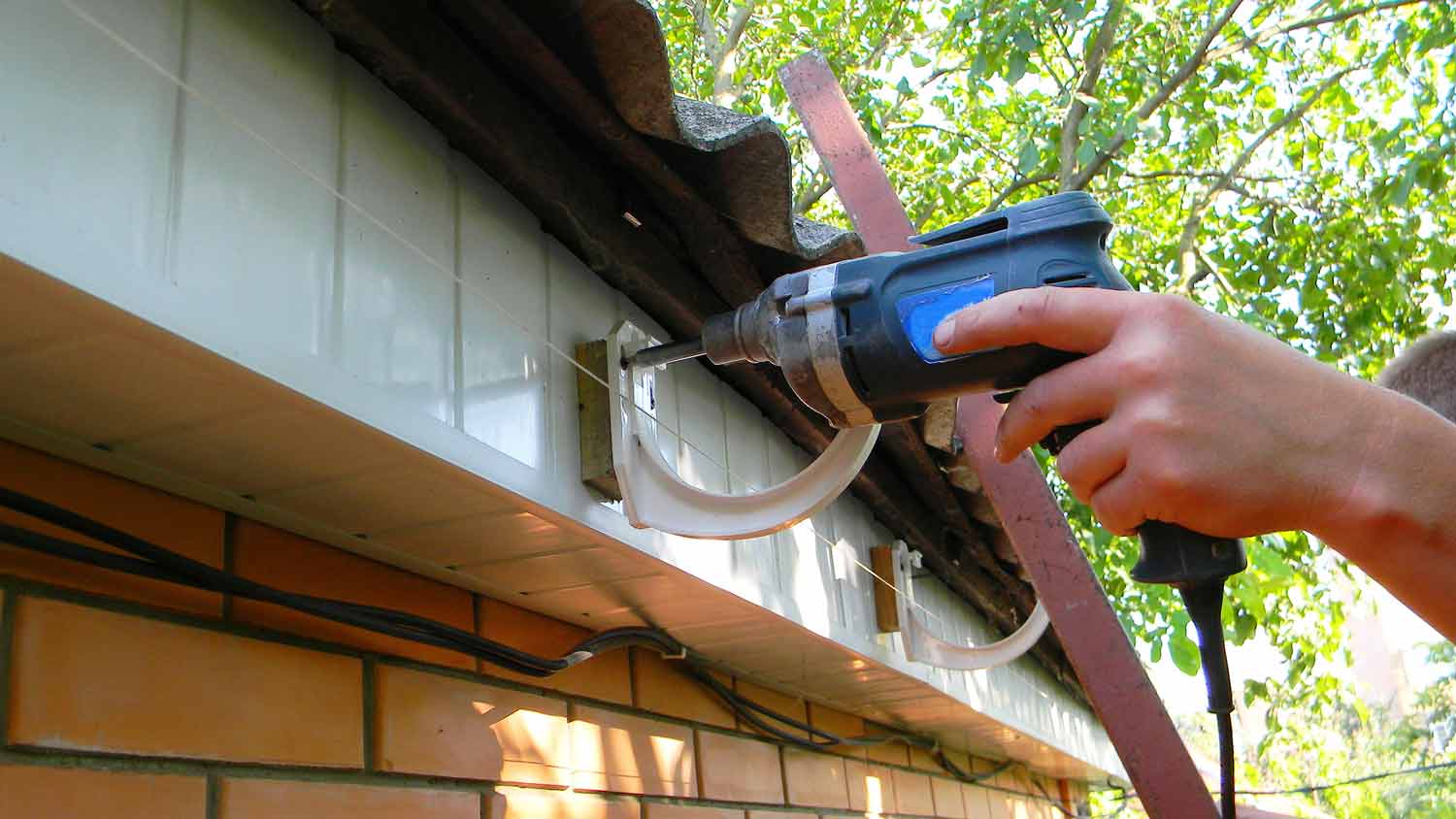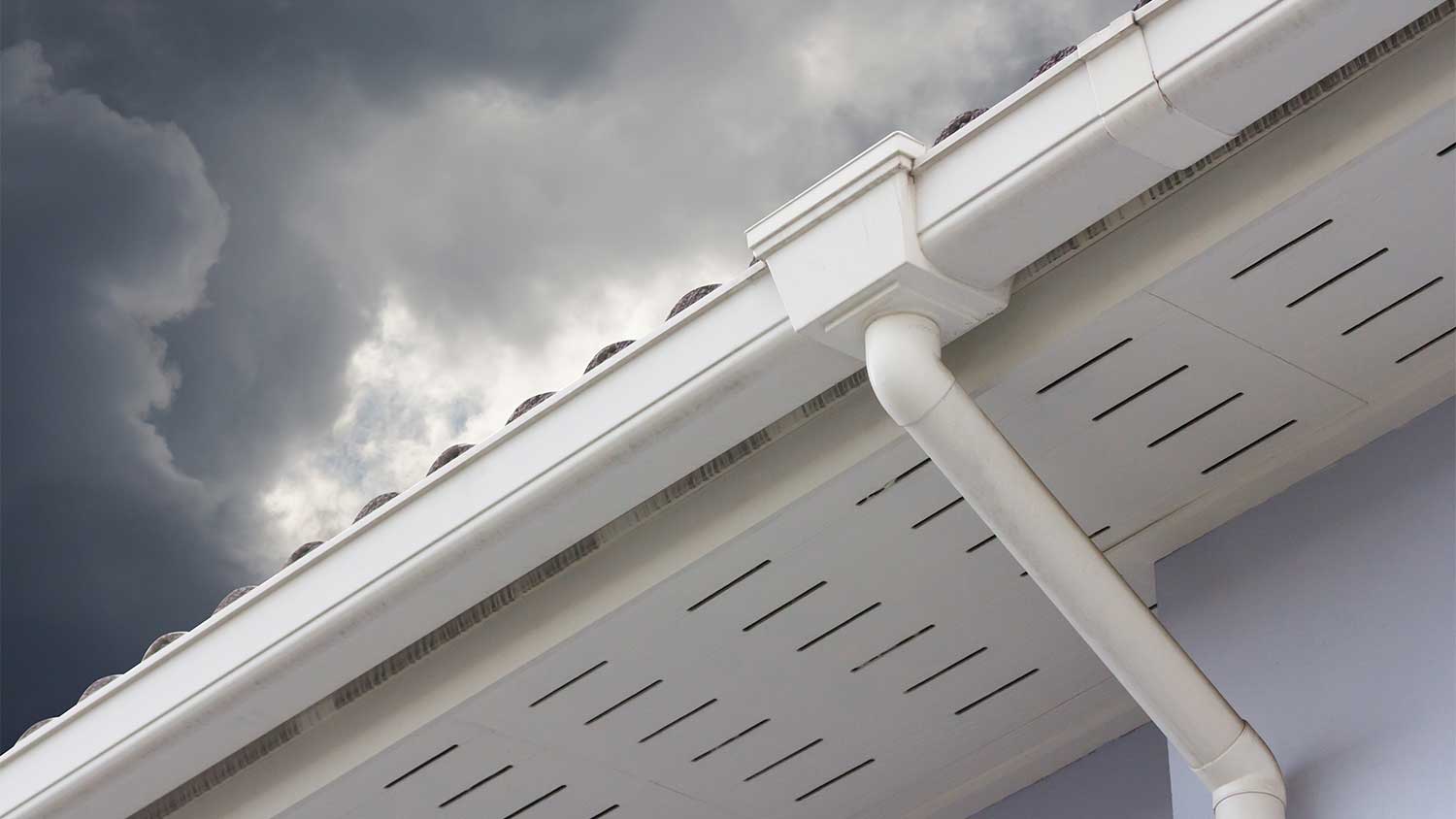6 Gutter Hanger Spacing Tips for a Flawless Setup
Don’t take this the wrong way, but your gutter hangers need some space


Gutter hanger spacing may seem like the least of your concerns when planning a new gutter installation, but there’s no discounting its importance. Hangers keep gutters fixed to your roof, but they also provide a great deal of support to your entire system—which they can’t properly give when spread out too far apart or placed too close together. So what amount is just right for keeping your gutters intact come rain or snow? These tips will help you find that sweet spot.
Cleaning gutters almost always requires using a ladder, which can be dangerous. If you plan to clean or work on your home’s gutters, ensure someone is available to hold the ladder steady or hire a gutter professional to avoid leaving the ground entirely.
1. Know the Minimum and Maximum Distances Allowed

No matter the type of gutter you’re dealing with, the maximum recommended distance between gutter hangers is three feet. Any more than that will put the structural integrity of your gutter system in jeopardy. Larger distances create more room for sagging and collapse, and can lead to costly repairs in both the short and long term.
On the flip side, it is fine to scale down the distance between gutters—but not by a ton. Two feet of space between hangers will give the whole setup extra strength, which can be a boon in places that see heavy rain and snowfall. But any less—like one to 1.5 feet of distance—is redundant. Such a small distance won’t make your system more secure, but it will mean you need to purchase more hangers.
Always make sure there’s a hanger at the center of the gutter, as this spot is most vulnerable and, when unguarded, can bring your system crashing down—heavy rain or not.
2. Evaluate Your Local Climate
Your particular weather conditions are the single biggest determiner of gutter hanger spacing. Gutters are at a larger risk of damage and failure in extreme climates, where heavy snow and rain rule the day. If this is your situation, err on the side of caution and place your gutter hangers only two feet apart. This will help the system carry the extra weight it’s bound to encounter.
By contrast, gutter hangers can safely be placed at a maximum three-foot distance in temperate climates that experience mild and infrequent rain and little to no snow.
3. Get Out the Tape Measure
Once you’ve figured out the best gutter hanger spacing for your system, whip out the measuring tape and mark all the designated spots. Now is not the time to eyeball it. You want to be as specific as possible to avoid premature damage.
4. Always Place Hangers Four Inches from Gutter End
When determining where to place gutter hangers, always start four inches from the gutter end on both sides. Like the center of a gutter, the edges are also vulnerable, especially since they connect to the downspouts. These add extra weight and make sagging more likely without proper reinforcements.
5. Drill Holes for Hangers in Advance

Once you know where your hangers need to go, drill all the holes at once. That way, you won’t have to measure between setting up each hanger—and, more importantly, you can gather all the tools you need for installation rather than climbing up and down the ladder over and over again. If you’re not so keen on working up high in the first place, find out who does gutter work, and don’t hesitate to hire a gutter installation pro near you instead.
6. Test System and Adjust as Necessary
Need to see it to believe your gutter hangers are properly spaced? Give your gutter system a quick test run once installation is over. Grab a long garden hose and a buddy to help control it from the ground, then place it into your gutter and gradually adjust the speed and intensity of the flow. This will give you a look at how your gutters will handle real-deal rain before the time comes. Water not flowing as seamlessly as you’d like, despite the hangers all being in the right place? You may need to adjust your gutter slope.
Frequently Asked Questions
How long hangers last will depend on what gutter material they’re made from, but generally you can expect to get at least 10 to 15 years from them no matter what they’re made from. But don’t wait for them to break to give them a checkup. Inspect this part of your gutters on a yearly basis, and make repairs at the first sight of damage.
There are five main types of gutter hangers, and all offer different benefits. Spikes and ferrules aren’t as durable as brackets and straps and wrap-around hangers, but they aren’t as expensive and will get the job done. Worried more about curb appeal than gutter strength? T-bar or T-strap and hidden hangers will keep these important gutter elements out of sight.
The average homeowner pays between $600 and $1,700 on gutter installation costs, though it depends on the material used and whether you hire a pro for the job. You’ll pay more for stronger materials like stainless steel and copper but can save up to half on labor costs by installing them yourself.





- Why Is Water Leaking Between the Gutter and Fascia?
- 10 Signs Your Gutters Were Installed Incorrectly
- Is Your Gutter in the Right Place? Here's What to Know
- Importance of Gutter Slope to Your Home
- 9 Essential Gutter Repair and Maintenance Tips
- A Complete Guide to Gutter Sizes, Placement, and Styles
- 5 Reasons for Overflowing Gutters and How To Fix It
- How Long Do Gutters Last? Learn When Should Your Gutters Be Replaced
- Who to Call When Your Gutter Leaks
- Why Your Gutters Are Pulling Away (and How to Fix Them)











